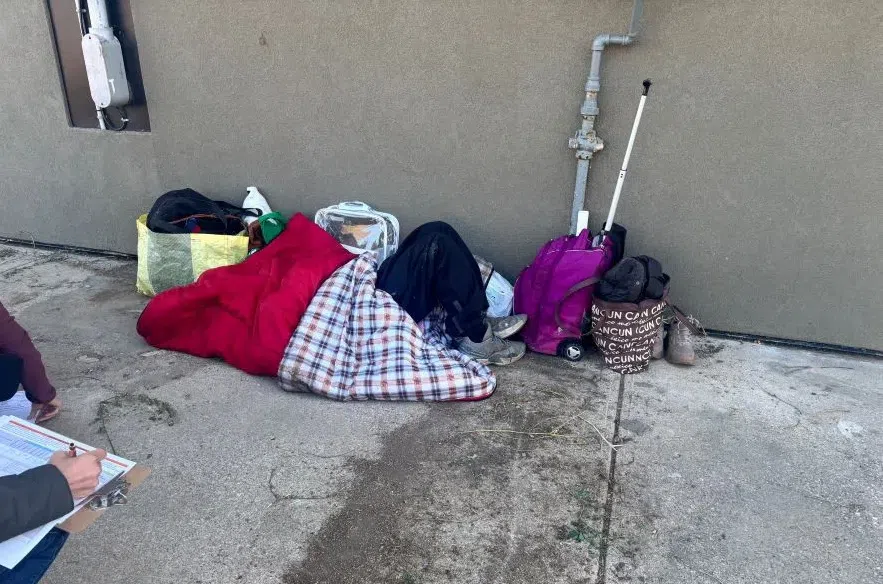More people in Saskatoon are going without stable housing than ever before, according to the city’s latest point-in-time (PiT) count.
The count, conducted on Oct. 16 with over 250 volunteers, identified 1,931 homeless people. It’s an increase of 432 people from 2024, or roughly 29 per cent higher.
Read more:
- Saskatoon’s point-in-time homeless count: A reporter’s observation
- Point-in-time count identifies 315 homeless children in Saskatoon
- Saskatchewan to spend $20M expanding and enhancing programs to address homelessness
Breaking down this year’s numbers, 725 people were categorized as unsheltered, with 151 living in encampments, 327 in emergency shelters, 444 in transitional homes, and 47 in systems like hospitals or correctional facilities.
An additional 237 people were listed under hidden homelessness, which accounts for people temporarily living with others or “couch surfing,” as City of Saskatoon’s Director of Planning and Development, Lesley Anderson, called it.
According to Anderson, income continues to be the dominant indicator of homelessness with people unable to afford a place to live.
The PiT count gives, “a snapshot of the minimum number of individuals experiencing homelessness” across Saskatoon, according to the city’s news release, and it’s intended to guide the development of short and long-term homelessness strategies.
A more detailed report on these numbers, including a demographic breakdown, is expected to be released by the city in January 2026.
But, with this year’s focus on counting individuals rather than conducting full surveys, Anderson said the report will have less information than 2024’s PiT count.
Warming centres already experiencing “peak” numbers
For Gordon Taylor, executive director with the Salvation Army Crossroads, the PiT count reflects reality.
“As the last few years have gone by, we’ve gotten busier each year. So, it lines up with the fact that the point-in-time count is also going up,” he said.
Taylor said the Salvation Army’s men’s shelter on Avenue C has been full year-round, whereas, “in previous years we would see a drop in numbers in the summer months.”
Likewise, St. Mary’s Warming Centre is already seeing close to 100 men every night this November. In years before, Taylor said the centre would see those numbers “at the peak of winter.”
“Usually the numbers gradually increased and by the middle of winter is when you’re at the peak. But we’re already at those numbers now,” he said.
Taylor said it’s especially concerning because the warming centre wasn’t even open in November for the last few years.
While there’s still enough space and staff to accommodate people, he said if those numbers continue to spike it’ll “put a strain” on the service.
Even though the PiT count only represents a snapshot of what’s happening in Saskatoon, Taylor said it still provides a sense of the trends and what’s changed over the years.
What he wants to see come out of it are long-term solutions, rather than the “band-aids” used each year when the city scrambles for winter warming locations.
Cheryl Carlson, manager of YWCA’s Crisis Shelter and Residence, also said changes need to happen.
She said government money put towards housing only addresses a “small piece” of the homelessness puzzle.
Even when the YWCA successfully finds people housing, according to Carlson, those people don’t have “the support to sustain that housing.” That includes not having the tools or knowledge to properly budget, pay rent, or maintain their environment.
She said it causes people to get kicked out, thereby starting the homelessness cycle again. The way to end it, Carlson said, is to invest in wraparound services.
Read more:











